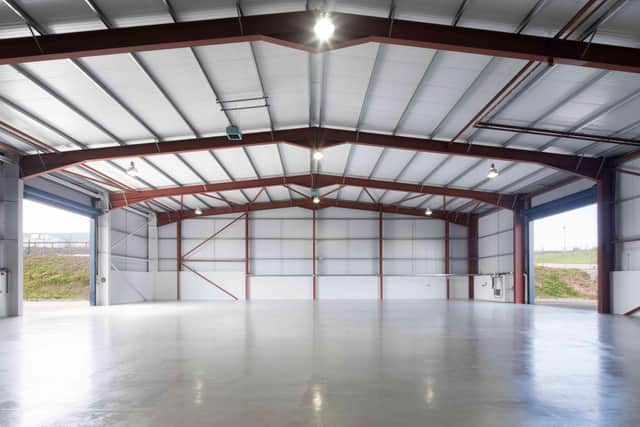Industrial property rental growth to outgun offices and retail for five years - Knight Frank report
Commercial property consultancy Knight Frank said rents for industrial property are likely to see an average increase of 3.1 per cent per annum between 2022 and 2026, outperforming the expected rates of 0.9 per cent and -0.3 per cent in the office and retail sectors, respectively.
According to the report, the Central Belt will have higher than average industrial property rental growth, with Edinburgh predicted to see a 3.4 per cent rise and Glasgow just behind at 3.3 per cent.
Advertisement
Hide AdAdvertisement
Hide AdKnight Frank said the current supply and demand imbalance for space in and around both cities looks likely to continue, with the level of planned speculative developments insufficient to meet projected requirements in the years ahead.
The findings build on the property firm’s 2022 Logistics Market Outlook report, which found that industrial rents across the UK are expected to rise by an average of 4.2 per cent per annum over the next five years. This is likely to be driven by Greater London, with an average increase of 8.7 per cent.
The strong rental growth is also turning into increased investor appetite for industrial and logistics assets. Last year, industrials and retail warehousing in Scotland attracted more investment than offices for the first time in a decade, with £636 million of deals compared to £488m, according to Knight Frank.
Scott Hogan, the firm’s head of Scotland industrials and logistics, said: “Industrials is still the hot sector throughout the UK and that is no different in Scotland. Rents outpaced other types of commercial property last year and, largely driven by the lack of new development in recent years, they only look likely to continue to do so - particularly in and around Glasgow and Edinburgh, where the supply-demand imbalance is especially acute.
“The market is, however, beginning to change and rising rents will encourage more speculative development. We are already in a new development cycle, with space coming onstream on the outskirts of Edinburgh and industrial hubs in and around Glasgow.


“While they will help alleviate some of the supply shortage, it is unlikely to be enough in the face of sustained high demand. Developers are also facing a combination of challenges including inflationary pressures, delivery disruption, and shortage of supplies and labour, which could limit activity in the short term.”
He added: “The investment side of the market will also likely continue to remain strong, with investor interest strong and yields sharpening.”
Claire Williams, industrial and logistics research lead at Knight Frank, said: “Investors have continued to increase allocations to the sector.
Advertisement
Hide AdAdvertisement
Hide Ad“Despite ongoing geopolitical turbulence impacting near-term horizons, the sector’s strong occupier market fundamentals are anticipated to persist, and it is these market dynamics and the continued structural shift towards higher levels of online spend that are underpinning investors’ rental growth expectations.
“Supply constraints, limited land availability, and robust occupier market fundamentals provide conviction that there is further rental growth to come in the UK and that this will drive future returns.”
Comments
Want to join the conversation? Please or to comment on this article.